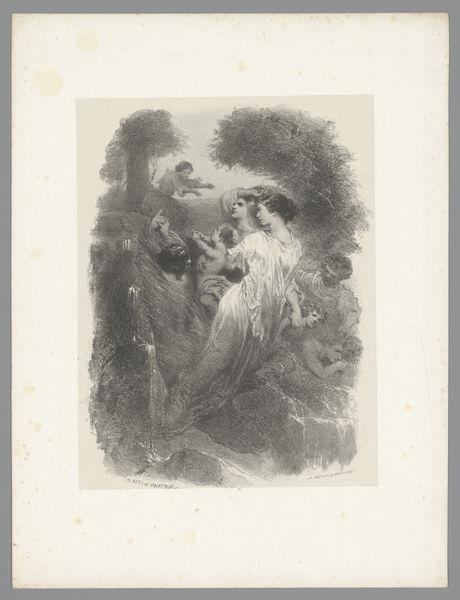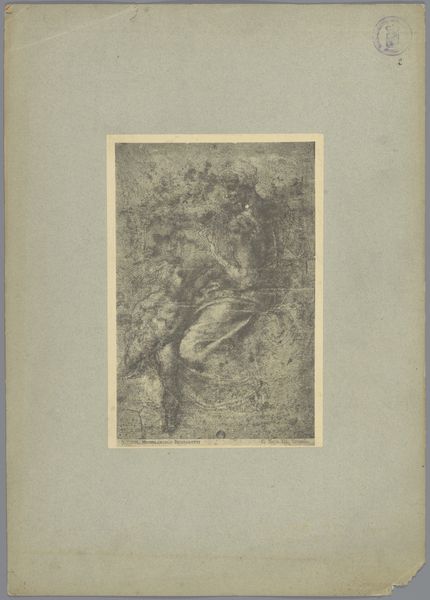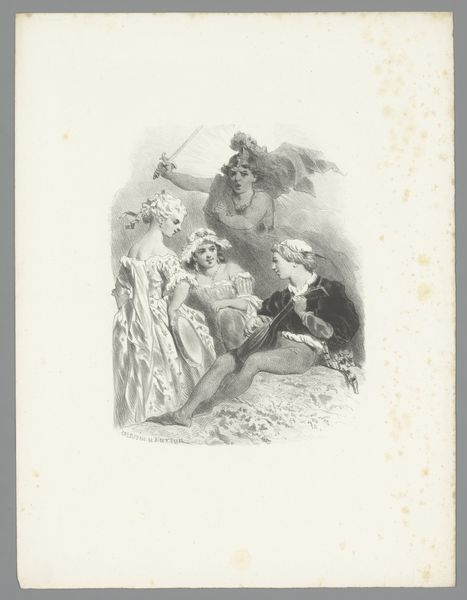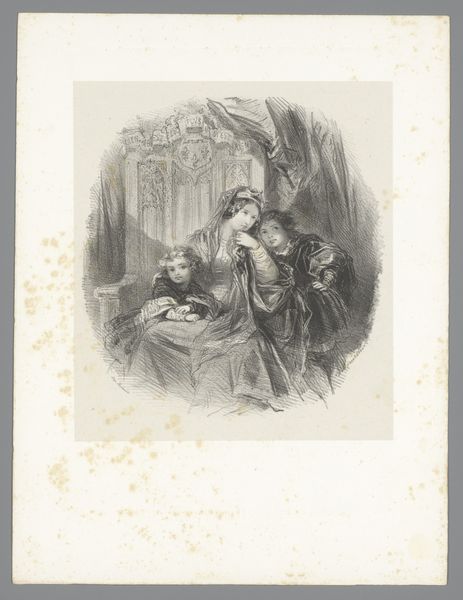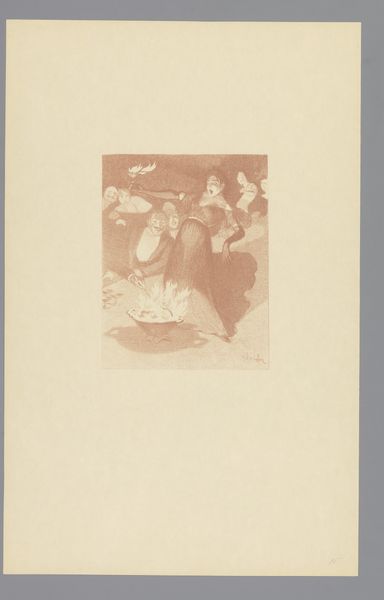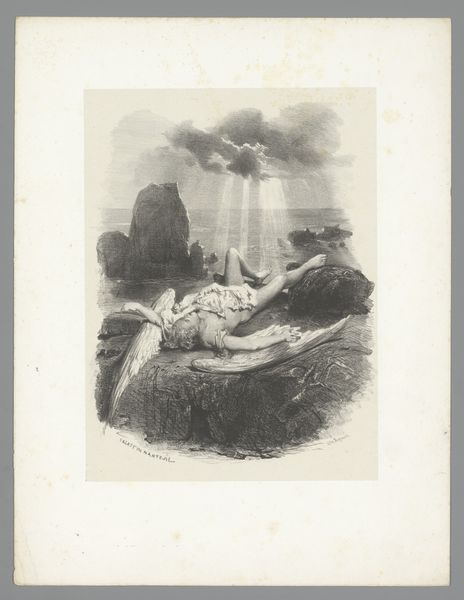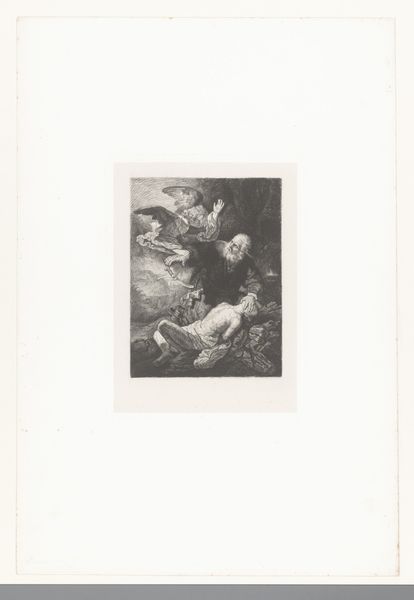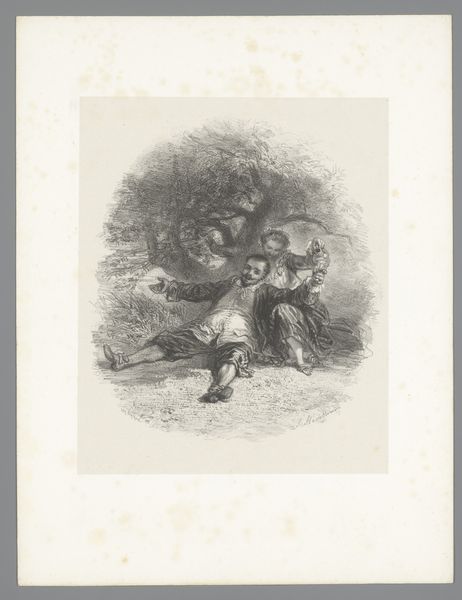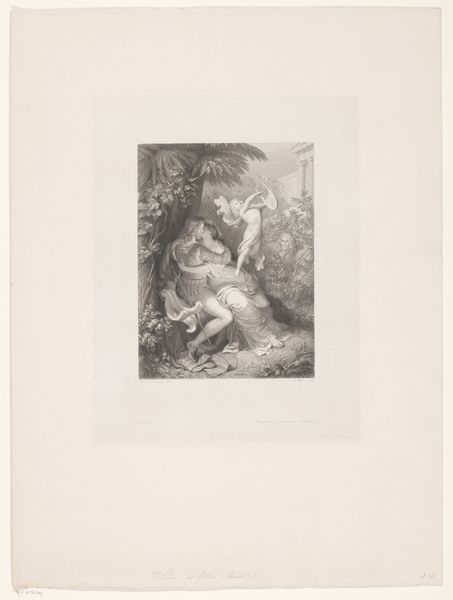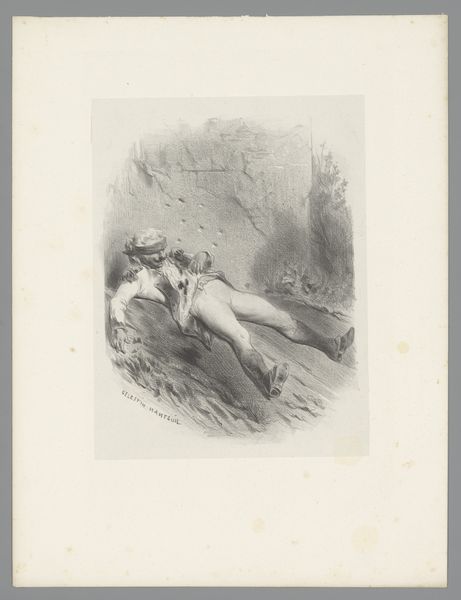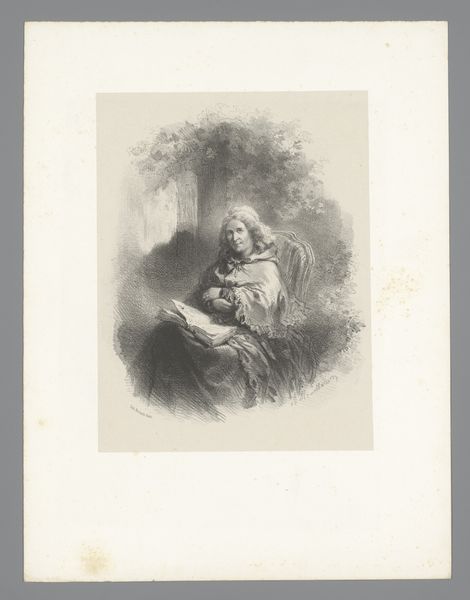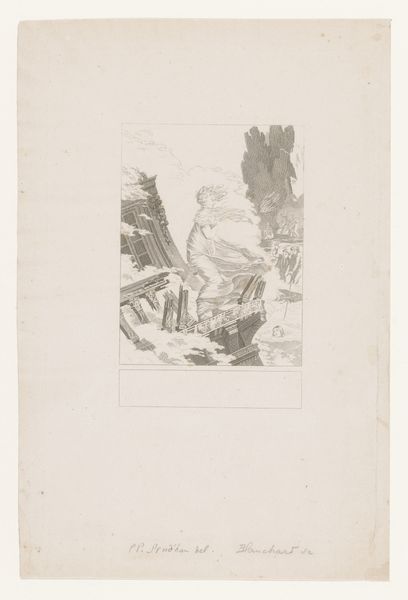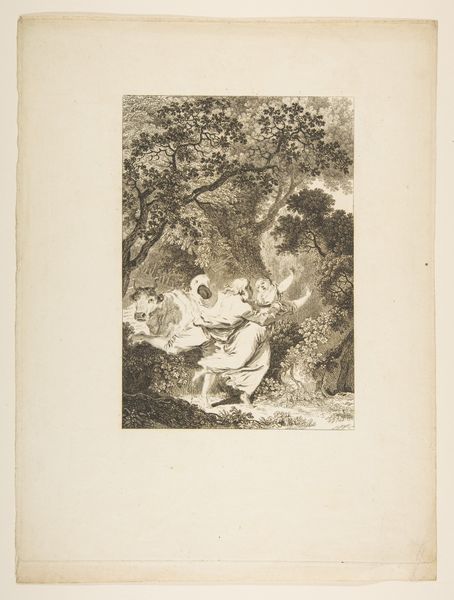
Ovaal reliëf met onder anderen Ceres en Bacchus, omringd door een putto met fakkels, een wijnvat, flessen wijn en bloemen 1851 - 1865
0:00
0:00
#
photo of handprinted image
#
light pencil work
#
pale palette
#
ink paper printed
#
pencil sketch
#
personal sketchbook
#
sketchbook drawing
#
watercolour illustration
#
sketchbook art
#
watercolor
Dimensions: height 357 mm, width 275 mm
Copyright: Rijks Museum: Open Domain
Curator: Ah, this piece feels like a hazy dream of ancient revelry! I'm getting such strong pastoral vibes...almost as if someone translated a Renaissance bacchanal into a Victorian drawing-room reverie. Editor: That's a lovely impression. What we're looking at is an oval relief created sometime between 1851 and 1865, envisioned by the French artist Célestin Nanteuil. The full title translates to "Oval Relief with, among others, Ceres and Bacchus, surrounded by a putto with torches, a wine barrel, bottles of wine, and flowers". Curator: The name Nanteuil rings a bell; didn't he dabble in theatrical design? It would definitely explain that almost stage-like composition with all those figures seemingly posing in the relief. The etching makes them feel suspended, weightless, in this pale dreamscape. Editor: You're spot on. Nanteuil did design sets, so it is like we're peering into an elaborate theatre prop. And think about it: Ceres and Bacchus—the gods of agriculture and wine, embodiments of earthly abundance, together in a single image made during the Second Empire which valued decadence in art... The piece serves as a potent commentary on class indulgence. Curator: And yet there's a melancholy to it, at least for me. Look at the sketchy, unfinished quality... It feels more like a fleeting idea captured in a moment of inspiration rather than a polished celebration of excess. The ink and watercolor seem to be trying to escape the defined areas, trying to burst loose. Editor: It’s fascinating how technique contributes to your sense of fleetingness! Think about its public reception; the delicate lines and almost ephemeral wash suggest a level of fragility, far removed from the booming economy. Perhaps a visual meditation on impermanence within a time of unprecedented industrial growth? Curator: Yes, there’s something profoundly fragile, even human, about that contrast. Like finding a single perfect wildflower growing stubbornly in a field of concrete. It definitely lends the whole scene a beautiful, reflective quality. It's an odd celebration. Editor: I think that nicely encapsulates the complex tension Nanteuil has captured, doesn't it? Both revelry and a faint whisper of things fading away... Curator: Absolutely. I might come away slightly wistful, but definitely richer from that observation.
Comments
No comments
Be the first to comment and join the conversation on the ultimate creative platform.
